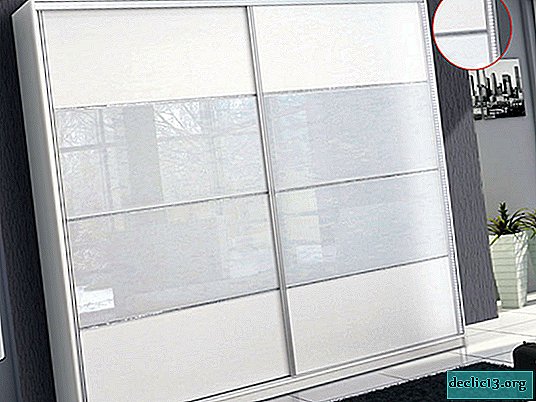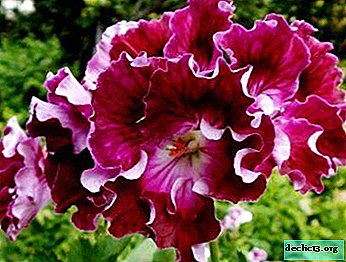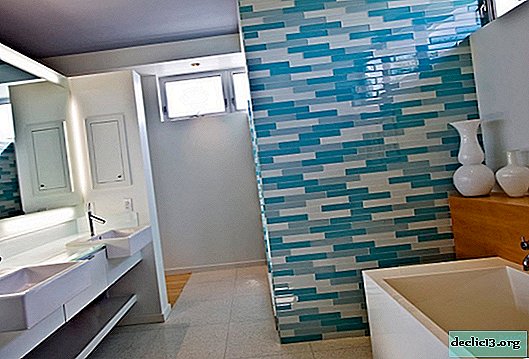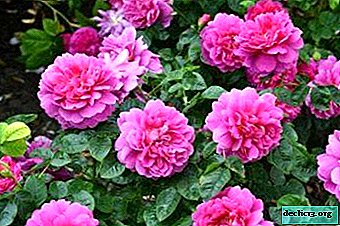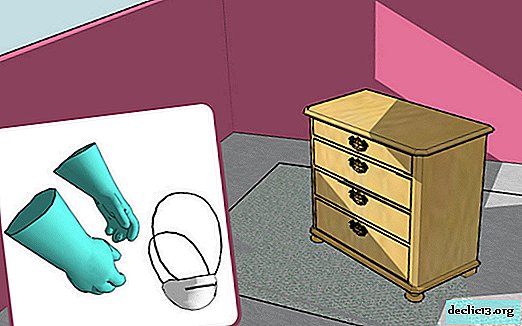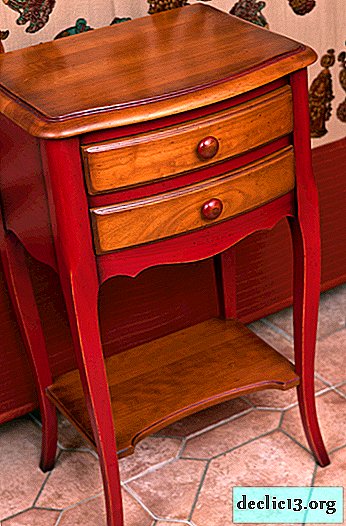How to ensure havortii full care at home? Flower Diseases and Pest Control
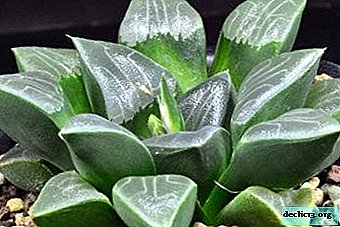
Haworthia attracts with its exotic appearance and variety of varieties. This flower is not considered capricious, however, errors in the content can lead to a loss of decorative plants. To avoid this, you need to know and follow the rules of care.
This article describes in detail how to ensure havortii full-fledged home care. Also presented are flower diseases and pest control measures.
Plant description
Haworthia is a small perennial belonging to succulents. Depending on the species, the stem of the plant is absent or very short - up to 12 centimeters. The leaves are different: fleshy, stiff, elongated, short, triangular, oval, concave or convex. Options for their color: white, green, brown, brick.
On sheet plates strokes, stripes, dots, grids can be placed. Along the edges are hairs and cloves. The surface is covered with white warty growths, expressed to varying degrees. The fleshy leaf plates accumulate water.
Some haworthia species have transparent windows on the leaves. This helps the light to penetrate deep into the plant. Leaves form a basal rosette. Plants very often give a lot of side shoots. The natural habitat of haworthia is the arid regions of South Africa, rocky or sandy slopes in the shade of shrubs.
Watch a video about the haworthia plant:
Photo
Check out the photo of haworthia growing at home:





How to care for a flower?
When maintaining Haworthia, you need to follow simple rules. This will preserve the health and attractive appearance of the plant for many years.
Where is better to place?
Haworthia loves the light, but it’s hard which can cause burns and dry leaves. The optimal place for the plant is the windowsill of the east or west window.
Important! On the south side, haworthia must be shaded. If you place the plant on a window facing north, the flower will lack light, which can lead to loss of brightness of the leaves.During the warm season, Haworthia can be taken out to the balcony or to the garden, protecting it from direct sunlight. Haworthia winter also requires bright, diffused lighting. With its lack, the plant stretches and loses its decorative effect.
Humidity requirements
There are no strict requirements for humidity. Haworthia develops normally in a room with dry air. In the cold season, a flower pot is best placed away from heating appliances. At the same time, slightly humidify the air by placing nearby containers of water.
Haworthia does not need spraying. Excess water on the plant can lead to decay of leaves and roots.
Ambient temperature
 The optimum temperature in summer should be between +18 and + 25 ° C. At this time, it is recommended to keep the haworthy in the open air, protecting it from precipitation and direct sunlight.
The optimum temperature in summer should be between +18 and + 25 ° C. At this time, it is recommended to keep the haworthy in the open air, protecting it from precipitation and direct sunlight.
Given regular watering and the absence of bright sun, the plant is able to tolerate short heat at + 30 ° C.
In winter, haworthia is at rest, a suitable temperature is + 10 ° C. When this indicator is exceeded, the plant stretches and loses its shape.
If the temperature drops below -7 ° C, the leaves will turn black and the process of decay will begin. It is necessary to regularly air the room where the haworthia is located.
Watering
In the spring-summer period, haworthy should be moderately watered once or twice a week. A signal to moisture is the complete drying of the topsoil by a third. In extreme heat, it is necessary to exclude prolonged drying of the earthen coma. In winter, it is necessary to moisten the soil once every two weeks, after waiting for the complete drying of the soil.
Watering should be done carefully so that water does not get into the center of the outletotherwise the root system of the plant may rot. It is necessary to use the settled water at room temperature.
Attention! You can not water the haworthia too abundantly, otherwise the plants will wither and the lower leaves will begin to die. Permanent moisture in the pan is not allowed, this starts the processes of decay of the root rosette and roots.Pruning
At home, the plant rarely blooms. At the end of spring, adult haworthia eject long peduncles. They have small white or greenish flowers that form panicle inflorescences. Havortia flowering has no decorative value, in addition, immediately after this period, some varieties die. Therefore, you should carefully prune the peduncle immediately after its formation.
The better the care of the plant when grown at home, the less blooming occurs. Many types of haworthia are able to actively grow. You can carefully cut off extra shoots, thereby maintaining the attractive shape of the flower.
It is also allowed to remove extra leaves. Only completely diseased leaves are cut off. Do not even try to prune even slightly yellowed leaves, they will not recover, but will not allow further rot. You should also trim the extra leaves. Slightly yellowed leaf plates cannot be removed, but completely diseased ones are necessary.
Fertilizing and fertilizers
 From May to August, fertilizing should be carried out with a frequency of once a month. It is necessary to use ready-made mineral fertilizers for succulents or ornamental foliage plants.
From May to August, fertilizing should be carried out with a frequency of once a month. It is necessary to use ready-made mineral fertilizers for succulents or ornamental foliage plants.
To prepare an aqueous solution, take the concentration two times weaker than indicated on the package.
Haworthia requires a minimum dosage of fertilizer. Excess minerals leads to redness or yellowing of the leaf plates.
Top dressing is allowed only a few hours after the main wateringwhen the soil is well saturated with moisture. Otherwise, you can burn the roots of the plant.
Watch a video on how to properly care for haworthy at home:
Diseases and Pests
Rot: types, prevention, control measures
- Root rot. This disease is expressed in blackening of the root system. The reasons are overflow of soil and hypothermia of the roots.
Necessary control measures:
- Extract the plant from the pot.
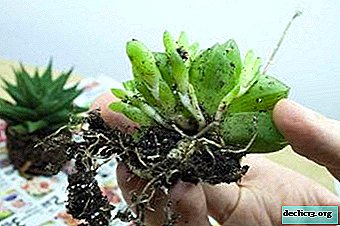 Inspect the roots.
Inspect the roots.- Ignite a knife or scissors.
- Remove affected areas.
- Treat the roots with a fungicide solution.
- Sprinkle slices with activated carbon powder.
- Place the plant in a fresh sterilized substrate.
- Adjust watering.
Prevention:
- Observe irrigation rules - do not allow waterlogging of the soil.
- Sterilize soil formed at home.
- Gray rot. Ash-gray spots appear on the leaves. Affected areas become soft over time.
Control measures:
- Treat with a solution of baseazole. Or prepare a soap-copper solution: 2% laundry soap and 0.2% copper sulfate.
- After 10 days, re-process.
Prevention:
- Keep Haworthia in a well-lit area.
- Ventilate the room regularly.
- Remove diseased leaves.
Main pests
The main pests that affect Haworthia are:
- aphid;
- spider mite;
- scale shield;
- worm.
We will analyze in detail:
 Spider mite. The plant is framed by a spider web. A cluster of pests can be seen at the ends of the leaves.
Spider mite. The plant is framed by a spider web. A cluster of pests can be seen at the ends of the leaves.Control measures:
- Wash leaves with soap and water.
- Treat the plant with an insecticide.
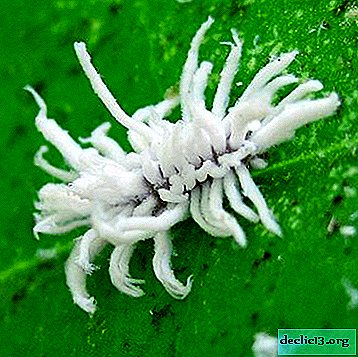 Mealybug. May affect leaves and roots. It has a white color and leaves a sticky discharge.
Mealybug. May affect leaves and roots. It has a white color and leaves a sticky discharge.Control measures:
- Transplant haworthia another pot and into new soil (for how to transplant haworthia and propagate it, read here).
- Having treated with a solution of Actara: 4 - 5 grams of substance per 5 liters of water.
Repeat the procedure every five to seven days. Two to three treatments are needed. With root worms - water the plant with this solution.
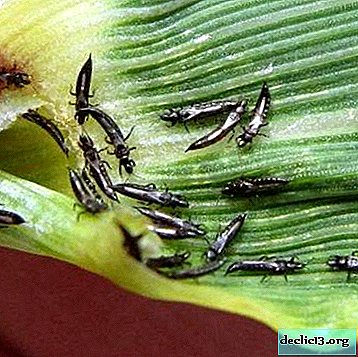 Thrips. Looks like little black flies. Leave a brown coating with a grayish sheen.
Thrips. Looks like little black flies. Leave a brown coating with a grayish sheen.Control measures:
- Treat with a solution of Actara.
- Transplant the plant into a new pot and fresh ground.
Activities for haworthy care are not particularly difficult. The main thing is to moderately moisten the soil, observe the temperature regime and the feeding schedule, provide a sufficient amount of light, protecting the flower from direct exposure to the sun.
Haworthia is sure to reciprocate such care and will decorate the house for many years.

 Inspect the roots.
Inspect the roots. Spider mite. The plant is framed by a spider web. A cluster of pests can be seen at the ends of the leaves.
Spider mite. The plant is framed by a spider web. A cluster of pests can be seen at the ends of the leaves. Mealybug. May affect leaves and roots. It has a white color and leaves a sticky discharge.
Mealybug. May affect leaves and roots. It has a white color and leaves a sticky discharge. Thrips. Looks like little black flies. Leave a brown coating with a grayish sheen.
Thrips. Looks like little black flies. Leave a brown coating with a grayish sheen.
